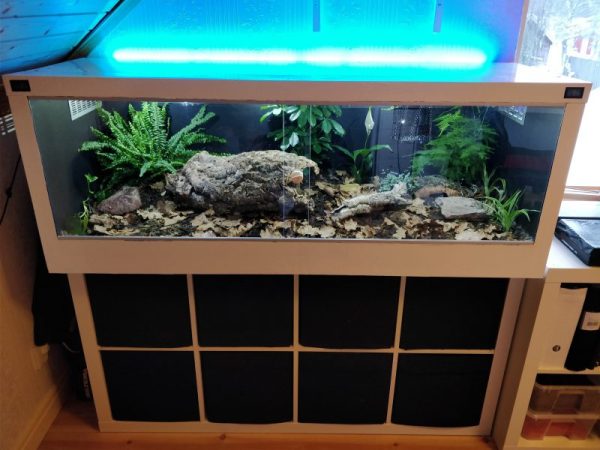Pets are often worth a labour of love. [leftthegan] — in want of a corn snake — found that Sweden’s laws governing terrarium sizes made all the commercial options to too small for a fully-grown snake. So they took matters into their own hands, building a bioactive vivarium for their pet!
[leftthegan] found an IKEA Kallax 4×4 shelving unit for a fair price, and after a few design iterations — some due to the aforementioned regulations — it was modified by adding a shelf extension onto the front and cutting interior channels for cabling. For the vivarium’s window, they settled on plexiglass but strongly recommend glass for anyone else building their own as the former scratches and bends easily — not great if their snake turns out to be an escape artist! In the interim, a 3D printed handle works to keep the window closed and locked.
Continue reading “Building A Bioactive Vivarium From An IKEA Shelf”












